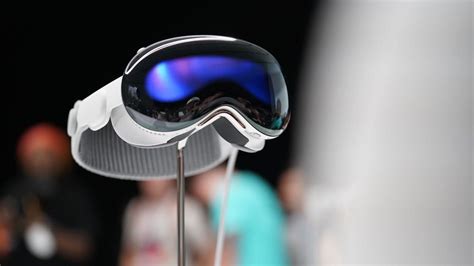The Apple Vision Pro, touted as one of the most advanced pieces of technology on the market, continues to stir a mix of curiosity, admiration, and skepticism. As with many high-end tech gadgets, the conversation surrounding the Vision Pro often gravitates towards its hefty price tag. At approximately $4000, the Vision Pro is seen as a luxury item, out of reach for the average consumer. It’s no surprise that many viewers and users have balked at its introduction, citing the cost as the primary barrier to broader adoption. Yet, despite the critiques about its expense, Vision Pro enthusiasts argue for the exceptional experience it promises.
Initial adopters have pointed to several significant strengths of the Vision Pro, particularly its impressive display capabilities. Dagmx, a former film producer, claims that the Vision Pro offers the best way to watch films at home, equating its visual quality with a ‘religious experience.’ For cinephiles and those in the film industry, this high praise is no small feat. The ability to watch 4K 3D HDR content with High Frame Rate (HFR) transforms the way films are consumed, effectively recreating the theater experience in the comfort of one’s home. Yet, the technology’s benefits extend beyond entertainment. Users like wysewun enjoy the immersive quality it provides, though they note some preferences for traditional systems in certain aspects like sound.
However, owning such cutting-edge technology isn’t without its setbacks and complications. Many users express a desire for improved ergonomics. As noted by joeguilmette, the Vision Pro, while groundbreaking, can feel heavy and uncomfortable when used for extended periods. Such physical inconveniences dampen the overall user experience and illustrate the growing pains of early technology. The cumbersome nature of the device underlines the challenge Apple faces in refining the Vision Pro to a more user-friendly, lightweight design, akin to what Animats and xvector envision—a future where these headsets have the form factor of regular glasses.
The Vision Pro’s application in professional settings also garners mixed reactions. A commenter, jjtheblunt, highlights its potential in creating a dynamic multi-monitor setup, ideal for on-the-go productivity. Nonetheless, the initial software limitations and the lack of seamless integration with existing macOS tools put a damper on its potential as a productivity booster. Freeqaz’s feedback about the lack of decent window management integration at the time of release underscores the need for a more robust and accommodating software ecosystem. Thankfully, subsequent updates like VisionOS 2 that introduce ultra-wide monitor modes and improved peripheral support (such as Bluetooth keyboards and mice) have begun to address these concerns.
Despite the innovation, critiques of its practicality during real-world use, such as travel, remain prevalent. Joeuilmette’s experience with the Vision Pro during flights is particularly telling; the expectations of an immersive confined-space experience were unmet, resulting in his decision to sell the device. Another user, kaveet, mentions quite positively about using the Vision Pro for productivity tasks like focused writing time and mirroring their Mac. This feedback hints at the evolving utility of the Vision Pro as more features and applications become optimized for the platform.
One of the most discussed aspects of the Vision Pro is its isolation factor. The ability to completely immerse oneself in digital environments is seen by some as a positive attribute, offering unprecedented focus and engagement. However, others like blarfingar raise points about the potential loneliness of solo viewing experiences, especially in VR environments designed to isolate. There are nuances to these experiences, which differ considerably based on individual lifestyles and preferences, suggesting that VR devices may not necessarily be universal solutions but rather situational tools.
As technology progresses, there will always be a balance between groundbreaking innovation and practical everyday usage. In the case of the Vision Pro, the early adopters are essentially navigating these turbulent waters for the mainstream audience. Their insights are invaluable, offering a roadmap for potential buyers and a feedback loop for developers. Companies like Apple are tasked with listening to this user feedback, addressing the grievances, and enhancing the user experience whether it’s through more ergonomic designs, richer content ecosystems, or seamless integration with existing tech. The Vision Pro’s journey is still unfolding, but the discourse surrounding it is a testament to the diverse needs and expectations of today’s tech-savvy consumers.


Leave a Reply